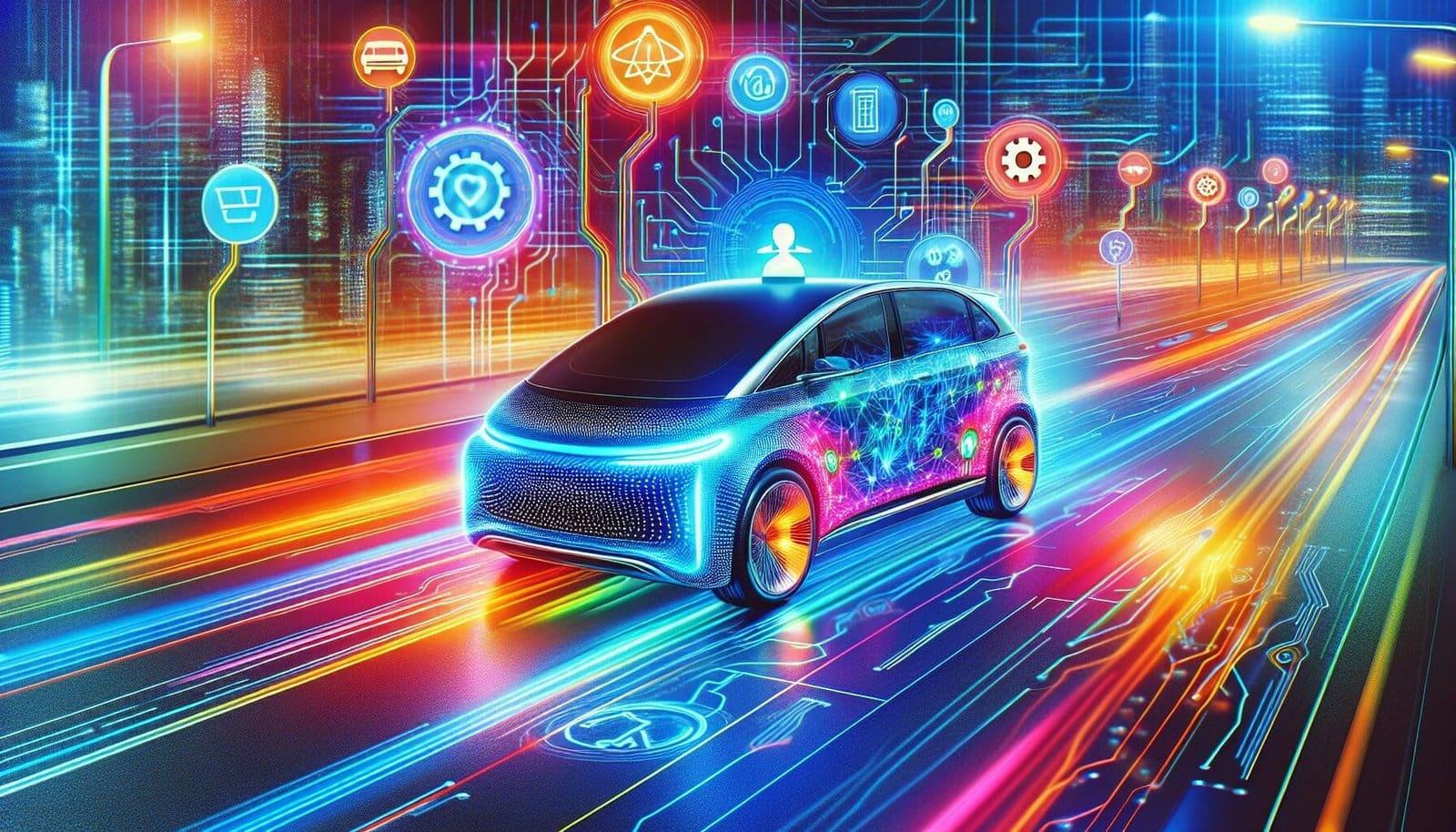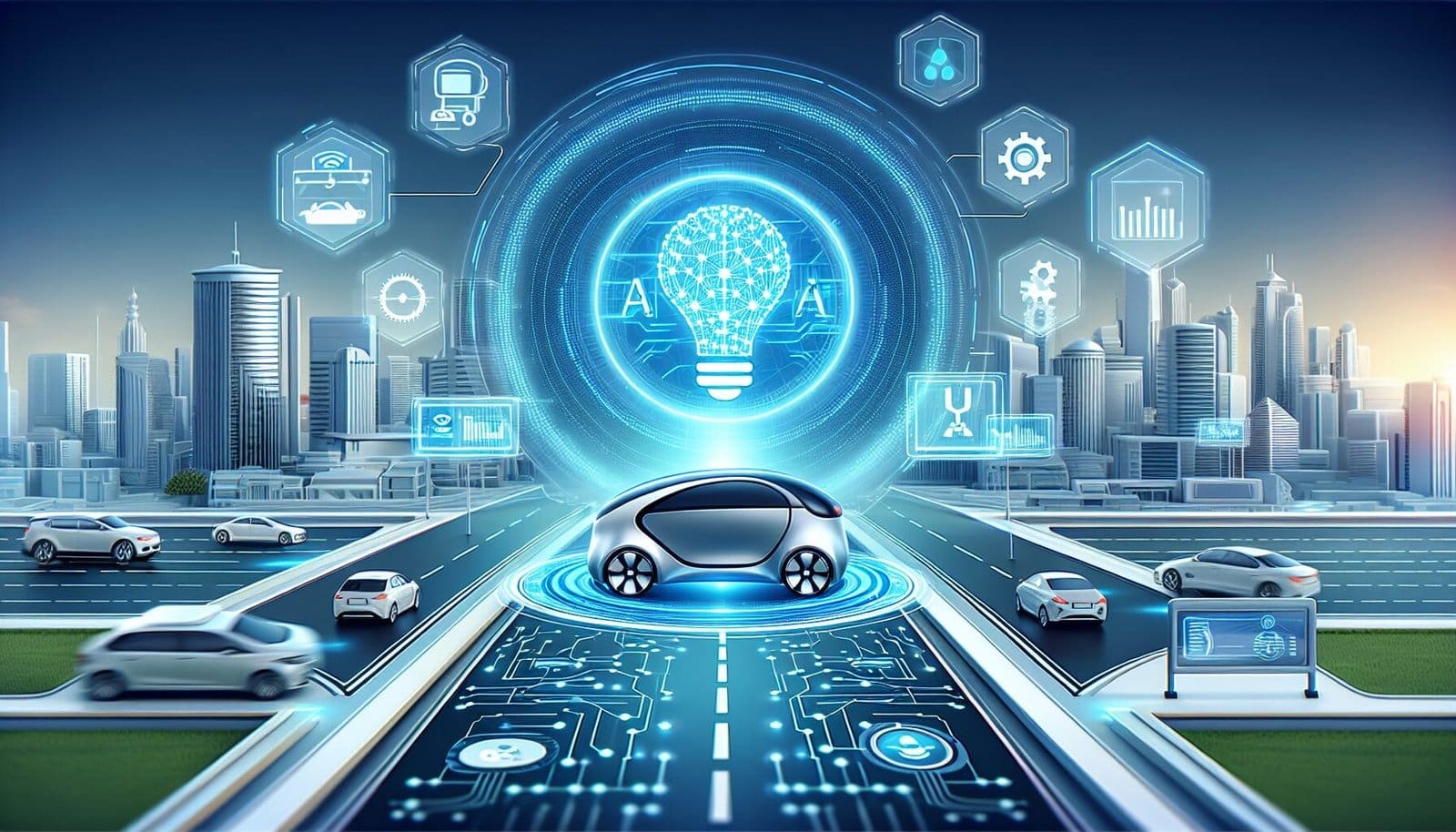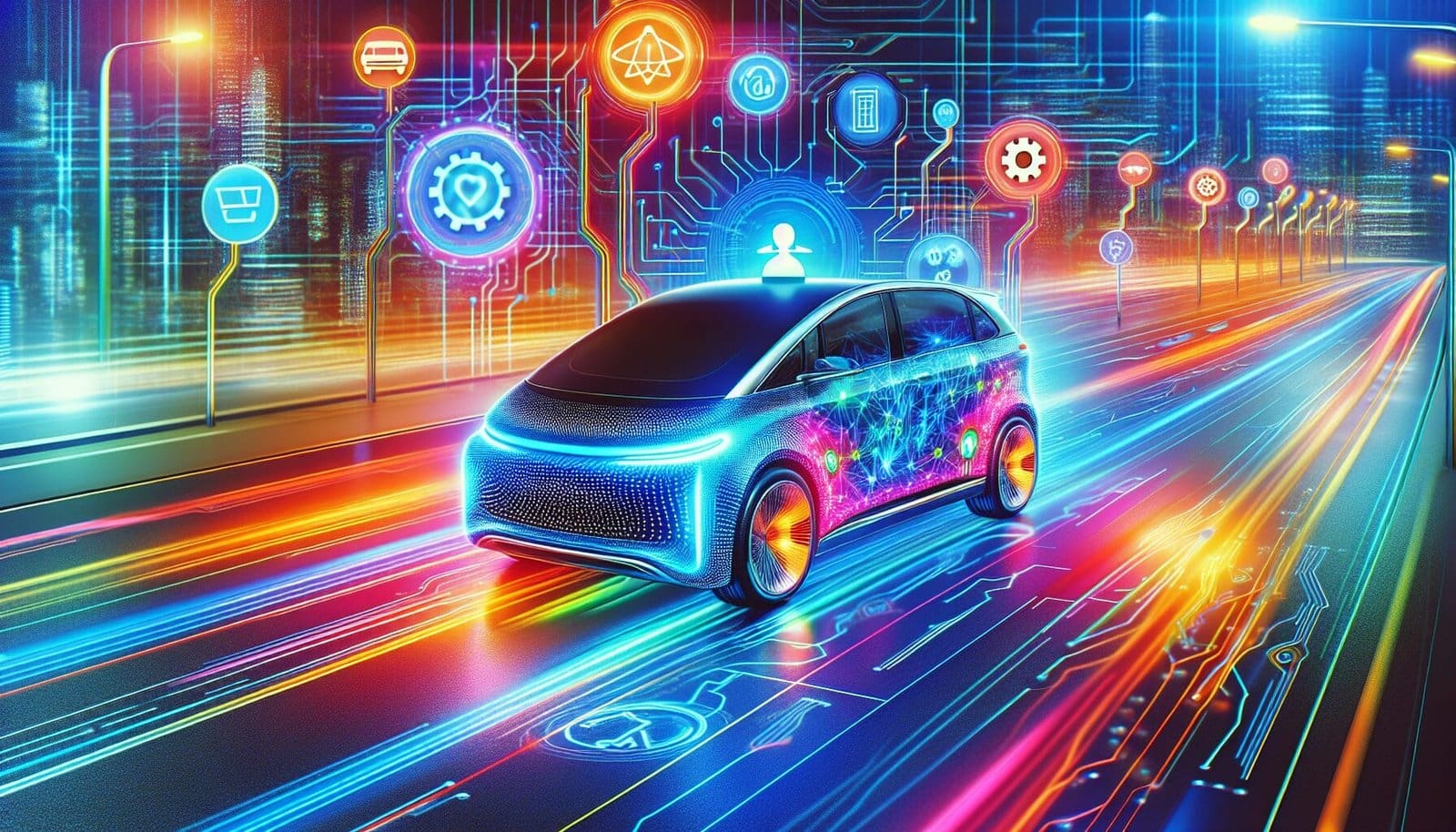In today's fast-paced world, where technology plays a vital role in our day-to-day lives, it is no surprise that artificial intelligence (AI) has become an integral part of modern transportation. From self-driving cars to intelligent traffic management systems, AI applications are revolutionizing the way we navigate our cities and travel from one place to another. With its ability to analyze vast amounts of data, make predictions, and adapt to changing conditions, AI is enhancing safety, efficiency, and sustainability in the transportation industry. This article explores the diverse ways in which AI is shaping the present and future of transportation, paving the way for a smarter and more connected world on the move.
Enhancing Safety

Traffic Monitoring
Artificial intelligence (AI) plays a crucial role in improving safety on our roads through advanced traffic monitoring systems. These systems utilize cameras, sensors, and computer vision algorithms to detect and analyze various traffic parameters. AI algorithms can accurately detect and track vehicles, pedestrians, and cyclists in real-time, providing valuable data to traffic management authorities. With this data, traffic incidents can be detected early, enabling quick responses and reducing the risk of accidents.
Driver Monitoring
AI-based driver monitoring systems are designed to ensure that drivers remain focused and alert while operating vehicles. These systems use cameras and machine learning algorithms to analyze driver behavior and detect signs of drowsiness, distraction, or impairment. By alerting drivers when their attention wavers or when signs of fatigue are detected, AI helps prevent accidents caused by human error.
Collision Avoidance Systems
Collision avoidance systems powered by AI technology have the potential to significantly reduce accidents on our roads. These systems use a combination of radar, lidar, and computer vision to monitor the surroundings of a vehicle and detect potential collisions. AI algorithms can accurately predict the trajectory of vehicles and pedestrians, allowing the system to alert the driver and take autonomous evasive actions if necessary. This proactive approach to safety can prevent accidents and save lives.
Improving Efficiency
Intelligent Routing
AI algorithms enable intelligent routing systems that optimize travel routes based on real-time traffic conditions. These systems consider factors such as congestion, accidents, and weather conditions to calculate the most efficient route for a driver. By avoiding heavily congested areas and suggesting alternative routes, AI-powered routing systems can significantly reduce travel time and fuel consumption.
Traffic Prediction
Accurate traffic prediction is essential for efficient transportation planning. AI algorithms analyze historical traffic data, weather conditions, and real-time data from sensors and cameras to predict traffic patterns with high accuracy. With this information, transportation authorities can make informed decisions regarding traffic management, such as adjusting signal timing, implementing detours, or recommending alternative transportation modes.
Energy Optimization
AI-powered energy optimization systems help reduce fuel consumption and emissions by optimizing various aspects of vehicle operation. These systems analyze factors such as traffic conditions, road gradient, and vehicle load to optimize acceleration, deceleration, and cruising speed. By making intelligent adjustments to driving behavior, AI can help vehicles operate more efficiently, saving fuel and reducing their carbon footprint.
Enhanced User Experience
Intelligent Infotainment Systems
AI-driven infotainment systems enhance the user experience during travel by providing personalized entertainment, navigation, and communication services. These systems use machine learning algorithms to learn the preferences and habits of individual users and recommend relevant content or services. Whether it's suggesting a personalized playlist, providing real-time traffic updates, or offering voice-controlled assistance, intelligent infotainment systems make travel more enjoyable and convenient.
Personalized Travel Assistance
AI-powered personal travel assistants provide personalized recommendations and assistance to travelers. These assistants analyze individual preferences, past travel data, and real-time information to offer customized travel itineraries, hotel recommendations, and restaurant suggestions. They can also assist with booking tickets, arranging transportation, and providing real-time updates on travel plans. With the help of AI, travelers can make the most of their journeys and have a seamless travel experience.
Smart Parking Solutions
Finding a parking spot in crowded urban areas can be a challenging and time-consuming task. AI-powered smart parking solutions aim to address this issue by utilizing real-time data and predictive algorithms to guide drivers to available parking spaces. These systems can integrate with smartphone apps, navigation systems, and parking sensors to provide real-time information on parking availability, pricing, and nearby facilities. By reducing the time spent searching for parking, AI-powered smart parking solutions improve efficiency and reduce congestion in cities.
Autonomous Vehicles
Self-Driving Cars
Autonomous vehicles are revolutionizing the transportation industry by utilizing AI technology to navigate and operate vehicles without human intervention. Self-driving cars are equipped with a range of sensors, cameras, and AI algorithms that allow them to perceive their surroundings, make complex driving decisions, and interact with other vehicles and pedestrians. With the potential to eliminate human error and improve traffic flow, self-driving cars have the potential to significantly enhance safety and efficiency on our roads.
Public Transportation
AI-powered autonomous vehicles are also being explored as a means of improving public transportation systems. Self-driving buses and shuttles can be deployed in urban areas to provide convenient and reliable transportation options. These vehicles can optimize routes, adjust schedules based on demand, and provide real-time updates to passengers. By reducing the reliance on traditional fixed-route systems, autonomous public transportation can enhance accessibility and reduce congestion in cities.
Delivery and Transportation Services
AI-powered autonomous vehicles have the potential to transform delivery and transportation services. Companies can utilize self-driving trucks and drones for efficient and cost-effective logistics operations. These vehicles can optimize delivery routes, reduce fuel consumption, and ensure timely and secure deliveries. By harnessing the power of AI, delivery and transportation services can become more efficient, productive, and environmentally friendly.
Smart Traffic Management
Adaptive Traffic Lights
Traditional traffic light systems often lead to inefficiencies and congestion, especially during peak hours. AI-based adaptive traffic lights aim to address this issue by dynamically adjusting signal timings based on real-time traffic conditions. These systems use data from cameras, sensors, and AI algorithms to optimize signal timings and prioritize traffic flow. By reducing waiting times and optimizing traffic distribution, adaptive traffic lights can greatly improve traffic efficiency.
Intelligent Intersection Control
At intersections, conflicts between vehicles, pedestrians, and cyclists can lead to accidents and delays. AI-powered intelligent intersection control systems aim to minimize these conflicts and improve safety. These systems use sensors, cameras, and machine learning algorithms to detect and analyze the movements of different road users. By dynamically adjusting signal timings and providing warnings or guidance to users, intelligent intersection control systems can significantly reduce collisions and improve the flow of traffic.
Dynamic Traffic Flow Control
AI-powered dynamic traffic flow control systems enable real-time adjustments to traffic management strategies based on changing conditions. These systems utilize data from various sources, such as traffic sensors, cameras, and weather information, to make informed decisions regarding lane control, speed limits, and signal timings. By adapting to fluctuating traffic patterns and reacting proactively to incidents, dynamic traffic flow control systems improve traffic efficiency and reduce congestion.
Cybersecurity Challenges
Protecting Vehicle Systems
As vehicles become increasingly connected and autonomous, ensuring the cybersecurity of vehicle systems is of utmost importance. AI can play a crucial role in detecting and preventing cyber threats to vehicle control systems. By analyzing network traffic, identifying anomalies, and implementing robust security measures, AI-powered cybersecurity solutions can prevent unauthorized access and protect vehicle systems from malicious attacks.

Securing Communication Networks
Secure communication networks are essential for reliable and safe transportation systems. AI can be utilized to detect and prevent cyber threats targeting communication networks used in transportation. By analyzing network traffic, identifying suspicious activities, and implementing encryption protocols, AI-powered cybersecurity solutions can ensure secure and uninterrupted communication between vehicles, road infrastructure, and transportation authorities.
Addressing Privacy Concerns
As transportation systems become more interconnected, concerns about privacy and data protection arise. AI can help address these concerns by implementing privacy-preserving technologies and protocols. By anonymizing and encrypting sensitive data, implementing secure data storage practices, and providing transparent data usage policies, AI-powered privacy solutions ensure that individual privacy rights are respected while still enabling the benefits of AI in transportation.
Data Analysis and Insights
Transportation Data Collection
AI technology enables efficient and accurate collection of transportation data. Sensors, cameras, and other IoT devices can be deployed to collect real-time data on traffic conditions, road quality, and environmental factors. AI algorithms can then analyze this data to identify patterns, trends, and potential areas for improvement. By leveraging the power of AI in data collection, transportation authorities can make data-driven decisions and optimize transportation systems.
Real-time Traffic Analysis
Real-time traffic analysis is crucial for effective traffic management and incident response. AI algorithms can process large volumes of real-time data from various sources, such as traffic sensors, cameras, and social media feeds, to provide timely and accurate information on traffic conditions. By analyzing this data, transportation authorities can gain insights into congestion patterns, identify bottlenecks, and take proactive measures to alleviate traffic congestion.
Predictive Maintenance
AI-powered predictive maintenance systems can help transportation companies optimize the maintenance of their vehicles and infrastructure. By analyzing sensor data, historical maintenance records, and environmental factors, AI algorithms can predict when and where maintenance is required. This proactive approach to maintenance minimizes downtime, reduces costs, and ensures the reliability of transportation systems.
Infrastructure Integration
Intelligent Transportation Systems
Intelligent Transportation Systems (ITS) encompass the integration of AI, sensors, and communication technologies to improve transportation efficiency and safety. AI algorithms analyze data from various sources, such as traffic sensors, cameras, and weather stations, to optimize traffic management, enhance traveler information systems, and enable connected and autonomous vehicles. By seamlessly integrating these technologies, ITS enables a more efficient and sustainable transportation ecosystem.
Smart Grid Integration
The integration of AI technology with smart grid systems enables more efficient energy management in transportation. AI algorithms can analyze data on energy demand, supply, and storage to optimize charging infrastructure for electric vehicles. By intelligently scheduling charging times, managing energy storage and distribution, and reducing peak energy demand, smart grid integration ensures sustainable and reliable energy supply for transportation.
V2X Communication Technology
Vehicle-to-Everything (V2X) communication technology utilizes AI-powered communication systems to enable seamless communication between vehicles, infrastructure, and other road users. V2X systems allow vehicles to exchange real-time information on traffic conditions, hazards, and road infrastructure, enabling proactive decision making and enhancing safety. By harnessing the power of AI in communication technology, V2X systems improve situational awareness and enable more efficient and cooperative transportation systems.
Supporting Sustainability
Reducing Emissions
Reducing emissions is a crucial goal in modern transportation. AI-powered systems can contribute to this goal by optimizing traffic flow, promoting eco-friendly driving behavior, and facilitating the adoption of electric vehicles. By optimizing traffic signal timings, promoting smooth and efficient driving patterns, and providing incentives for electric vehicle usage, AI supports sustainable transportation practices and helps reduce harmful emissions.
Optimizing Fuel Consumption
AI algorithms can analyze various factors, such as traffic conditions, road gradient, and vehicle load, to optimize fuel consumption in vehicles. By providing real-time feedback and suggestions for eco-friendly driving, AI-powered systems encourage drivers to adopt fuel-efficient habits, such as smooth acceleration and deceleration, maintaining a steady speed, and avoiding unnecessary idling. By optimizing fuel consumption, AI helps mitigate the environmental impact of transportation.
Encouraging Shared Transportation
AI technology can play a significant role in promoting shared transportation options, such as carpooling and ride-sharing services. By analyzing travel patterns, matching users with compatible routes and preferences, and optimizing vehicle utilization, AI-powered platforms facilitate efficient and cost-effective shared transportation. By reducing the number of individual vehicles on the road, shared transportation contributes to reducing congestion, emissions, and the overall environmental footprint of transportation.
Future Possibilities
Hyperloop Transportation
The concept of hyperloop transportation holds the promise of revolutionizing long-distance travel. Hyperloop systems utilize AI technology in various aspects, such as propulsion, routing, and control systems. AI algorithms can analyze real-time data on passenger demand, weather conditions, and traffic congestion to optimize hyperloop operations for efficiency and safety. By combining the speed of air travel with the convenience of urban transit, hyperloop transportation systems offer a glimpse into the future of transportation.
Flying Cars
Flying cars, also known as vertical takeoff and landing (VTOL) vehicles, are a vision of future transportation. AI technology plays a critical role in the operation and control of flying cars, ensuring safe navigation, obstacle detection, and autonomous flight capabilities. These vehicles can potentially revolutionize urban mobility, offering a faster and more flexible alternative to ground-based transportation. With the continued advancement of AI, flying cars may soon become a reality.
Smart City Integration
The integration of AI technology in transportation goes beyond individual vehicles and infrastructure. AI has the potential to play a central role in smart city initiatives, where various systems and services are interconnected to enhance overall urban living. AI algorithms can analyze data from transportation, energy, and other sectors to optimize resource allocation, improve traffic management, and enhance overall sustainability. By fostering synergy between different aspects of urban life, smart cities powered by AI can offer efficient, convenient, and sustainable transportation experiences for their residents.
In conclusion, artificial intelligence is revolutionizing transportation in numerous ways. From enhancing safety and efficiency to improving user experience and enabling autonomous vehicles, AI has a transformative impact on the entire transportation ecosystem. As we continue to explore the potential of AI, future possibilities such as hyperloop transportation, flying cars, and smart city integration hold the promise of even more advanced and sustainable transportation systems. With AI as our ally, we can look forward to a future of safer, more efficient, and environmentally friendly transportation.








